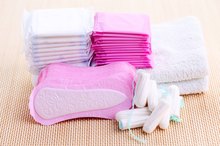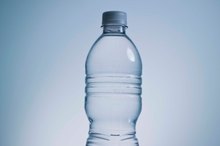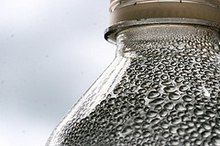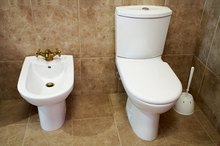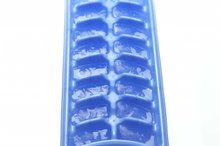Health Effects of Plastic Water Bottles
Some types of plastic water bottles contain chemicals that may leach into your drinking water. Bisphenol A, or BPA, is one of the most commonly cited culprits, and is found in hard plastic bottles marked with plastic code "7." Other plastics also pose a potential health threat. According to CBC News, Canada banned the use of BPA in October 2008 so the full health effects could be explored further. Bottles containing BPA are also prohibited in Japan, according to Scientific American, though as of 2010 they are still widely used in the United States and other parts of the world.
Development and Fertility Effects
The BPA used in Type 7 plastic water bottles is linked to a number of potential complications for pregnant women and the fetus. According to CBC News, BPA acts as a faux-estrogen, and can cause chromosomal abnormalities. These abnormalities are tied to birth defects and developmental disabilities in utero and childhood. Exposure to these faux-estrogens while in the womb can cause early onset of puberty and increase the infant's risk of prostate or breast cancer as an adult. It may also affect the future fertility levels of a female fetus. CBC News also reports potential links between BPA exposure and hyperactivity disorders and aggressive behaviors in young girls.
- The BPA used in Type 7 plastic water bottles is linked to a number of potential complications for pregnant women and the fetus.
Higher Rates of Diseases for Adults
Chemicals in Sanitary Pads
Learn More
Water bottles containing BPA have also been linked to increased rates of disease in adults. According to CBC News, humans with the highest concentrations of BPA in their urine are three times more likely to suffer from cardiovascular disease and 2.4 times more likely to have Type 2 diabetes than people with low BPA concentrations.
According to CBC News, BPA exposure is also tied to breast, prostate and ovarian cancer, though further research is needed to fully explore this subject.
Exposure to Bacteria
Bottles marked as Type 1 plastic are made from polyethylene terephthalate, or PET. These are the soft plastic bottles most commonly used for bottled water. PET bottles contain no BPA or faux-estrogen, but do pose potential health risks. According to North Dakota State University, these bottles are often linked to bacterial contamination when they are re-used. This is primarily due to the bottle's design, which makes it difficult to properly clean the bottle for reuse. North Dakota State University reports that when used Type 1 bottles are tested for cleanliness, 13 percent are found to contain germs from food or saliva while another 9 percent contain fecal matter.
- Bottles marked as Type 1 plastic are made from polyethylene terephthalate, or PET.
- According to North Dakota State University, these bottles are often linked to bacterial contamination when they are re-used.
Related Articles
References
- Sierra Club: Hazards of Hydration
- Scientific American: Plastic (Not) Fantastic: Food Containers Leach a Potentially Harmful Chemical
- US News and World Reports: Plastic Water Bottles: Should You Avoid the Disposable Kind, Too?
- North Dakota State University: Clean Reusable Water Bottles Thoroughly
- Welle F, Franz R. Migration of antimony from PET bottles into beverages: Determination of the activation energy of diffusion and migration modelling compared with literature data. Food Addit Contam Part A Chem Anal Control Expo Risk Assess. 2011;28(1):115-26. doi:10.1080/19440049.2010.530296
- Bach C, Dauchy X, Chagnon M-C, Etienne S. Chemical compounds and toxicological assessments of drinking water stored in polyethylene terephthalate (PET) bottles: A source of controversy reviewed. Water Research. 2012;46(3):571-583. doi:10.1016/j.watres.2011.11.062
- Raj SD. Bottled water: How safe is it?. Water Environ Res. 2005;77(7):3013-8.
- Lilya, D. Environmental Engineering Program. Society for Risk Analysis 2001 Annual Meeting.
Writer Bio
Emily Beach works in the commercial construction industry in Maryland. She received her LEED accreditation from the U.S. Green Building Council in 2008 and is in the process of working towards an Architectural Hardware Consultant certification from the Door and Hardware Institute. She received a bachelor's degree in economics and management from Goucher College in Towson, Maryland.
